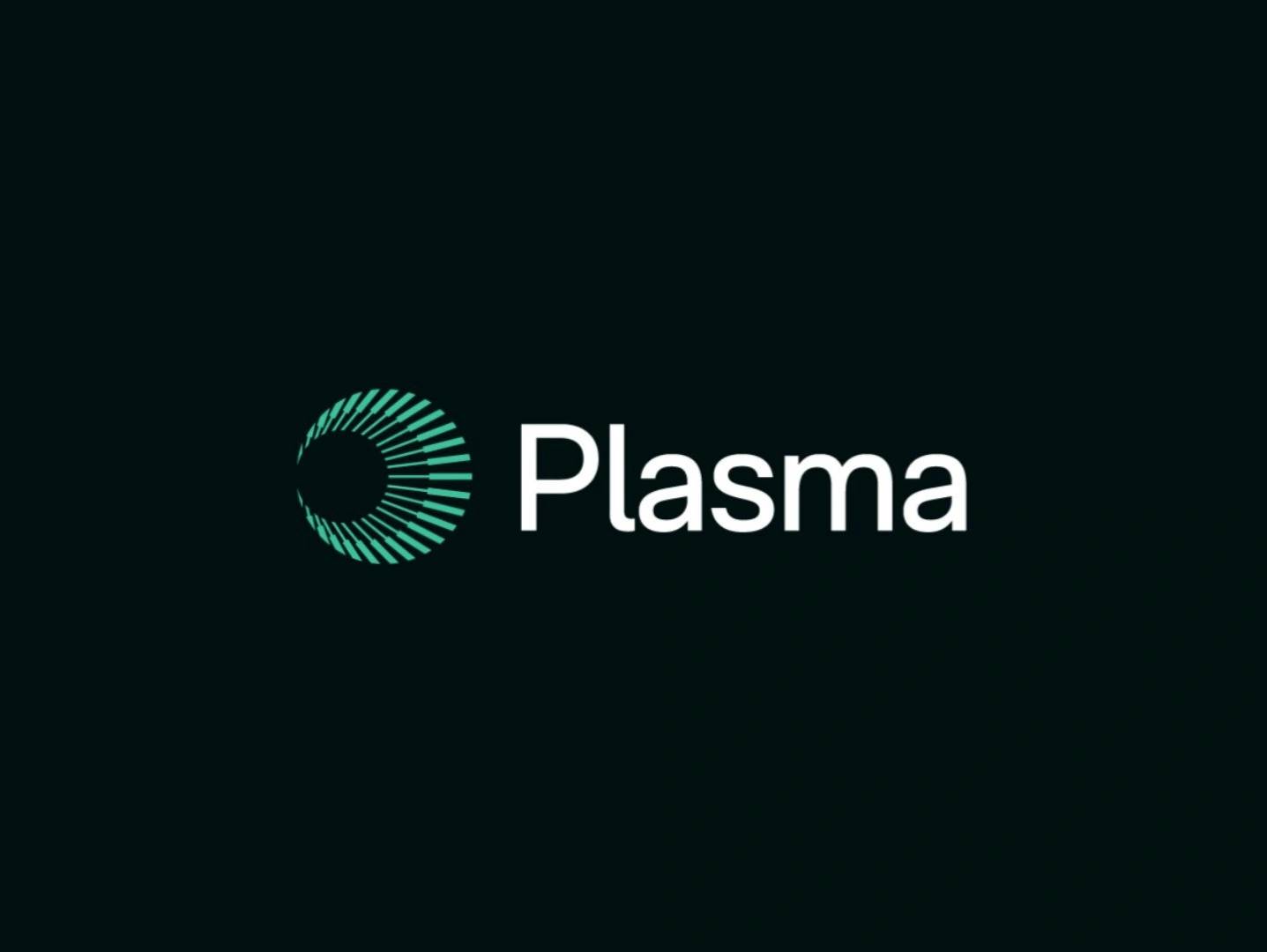订阅 wiki
Share wiki
Bookmark
Plasma (XPL)
Plasma (XPL)
Plasma 是一个 Layer 1、与 EVM 兼容的、权益证明 (Proof-of-Stake) 区块链,专门设计用作基于稳定币的新全球金融系统的基础设施。该网络针对高性能稳定币支付和去中心化金融 (DeFi) 应用程序进行了优化,旨在提供可扩展、低成本的金融轨道。 [1] [14]
概述
Plasma 的开发是为了解决快速增长的稳定币市场缺乏专用、定制网络的问题。其核心使命是以最小的费用和透明度实现资金的高速流动,将自身定位为“货币 2.0”的基础层。该项目的价值主张集中在为开发者和公司提供更快、更便宜、更简单的体验,以构建用于储蓄、消费、发送和赚取稳定币的应用程序,目标用例包括汇款、支付和全球商业。 [1] [12]
该项目在技术和加密货币行业知名人士和公司的重要支持下启动了其主网,包括 Peter Thiel 的 Founders Fund、Tether、Bitfinex 和 Framework。 [14] [13] 在首次亮相时,该网络获得了超过 20 亿美元的稳定币总锁定价值 (TVL),并与来自 Aave、Ethena、Fluid 和 Euler 等合作伙伴的 100 多个 DeFi 集成一起启动。 [15] 在代币激励的推动下,存款迅速增长,在最初的 24 小时内超过 40 亿美元,使 Plasma 成为 DeFi 存款额第八大的区块链。 [16]
首席执行官 Paul Faecks 在发布会上表示:“稳定币是货币 2.0”,并补充说,无论当地市场现实如何,普遍获得美元的机会应该会扩大投资机会。 [15] Plasma 的匿名 DeFi 负责人 River 评论了此次发布会,他说:“我们预测发布会会受到好评,但市场的反馈和最初的成功甚至超出了我们最乐观的设想。” [16] Tether 首席执行官 Paolo Ardoino 也评论了该项目的重要性,他说:“随着供应和用户的强劲增长,我们正在进入稳定币主流采用的新阶段。为了应对这一挑战,拥有安全、去中心化和可扩展的基础设施比以往任何时候都重要。Plasma 旨在提供这些基本轨道。” [6]
历史
Plasma 通过由 Framework 和 Bitfinex 领投的 2400 万美元风险投资以及 5100 万美元的公开发售,筹集了超过 7500 万美元的资金。[11] [7] 早在 2025 年,该项目就以 5 亿美元的完全稀释估值,对其总代币供应量的 10% 进行了首次代币发行 (ICO)。此次发售采用了一种预存款机制,吸引了极大的兴趣;6 月份的存款活动在短短 30 多分钟内就达到了 10 亿美元的上限。最初的 5000 万美元公开发售超额认购了 3.23 亿美元。随后,Binance Earn 链上 Plasma USDT 产品也达到了 10 亿美元的最终认购上限。[12] [15]
Plasma 的“主网 beta”于 2025 年 9 月 25 日正式启动。[10] 在其启动当天,原生代币 XPL 在主要的加密货币交易所上市,包括 Binance、OKX 和 Bybit。[13] [17] 该代币首次亮相时的市值为 24 亿美元,峰值超过 28 亿美元,早期交易价格达到 1.54 美元。价格后来稳定在 1.20 美元左右,使其完全稀释估值接近 120 亿美元。这比其公开发售估值增长了 2,300%,为种子轮投资者带来了 324 倍的回报。[13] [16]
为了奖励早期支持者,该项目分发了 2500 万个 XPL 代币的奖励空投,在预存款 ICO 计划的所有参与者之间平均分配,无论他们最终是否购买了代币。[12] Plasma 首席执行官兼创始人 Paul Faecks 在发布时表示:“这是我们的团队竭尽全力使 Plasma 成为 Money 2.0 的完美家园的结晶。我们主网的启动仅仅是个开始。”[12]
技术
Plasma 构建为一个高性能、与 EVM 兼容的区块链,允许开发者无需修改即可从以太坊部署智能合约,并使用 Hardhat、Foundry 和 MetaMask 等标准开发工具。 [1]
架构
该网络的架构由使用 Rust 编程语言编写的组件构建,以保证性能和安全性。
共识机制
Plasma 利用 PlasmaBFT,这是 Fast HotStuff 共识算法的一个定制高性能实现。该机制旨在提供拜占庭容错(BFT)的安全保证,并具有低延迟的最终性,从而实现低于一秒的区块时间和超过每秒 1,000 笔交易的吞吐量。 [1] [6] [15]
该网络以“主网测试版”阶段启动,采用渐进式去中心化策略。最初,验证者节点由 Plasma 团队运营。该项目计划随着时间的推移引入外部的、无需许可的验证者和一个委托质押系统,以增强网络安全性和去中心化。质押机制使用“奖励削减”(扣留不良行为的奖励)而不是“质押削减”(没收质押资本)来惩罚恶意验证者。 [1]
主要特性
Plasma链集成了多种针对稳定币优化的功能:
- 零费用USD₮转账:该协议通过托管的支付方合约赞助简单Tether (USD₮)转账的gas费用,为支付和汇款应用中的终端用户创造无摩擦的体验。
- 自定义Gas代币:用户可以使用受支持的稳定币(如USD₮)或其他桥接资产支付更复杂的交易费用。该协议自动处理到原生XPL代币的转换。
- 保密支付:该网络包括协议级别的保密但合规的交易功能支持,以增强用户隐私。
- 互操作性:Plasma集成了LayerZero作为其底层互操作性协议,以实现跨链访问其金融轨道。Stargate Finance作为网络的官方桥梁,促进来自以太坊等其他生态系统的流动性转移。计划中还包括一个信任最小化的比特币网络桥梁。 [1] [10]
Tokenomics
Plasma网络的原生代币是XPL。它对于区块链的安全性、交易处理和激励机制至关重要。 [7]
实用性
XPL代币在生态系统中具有多种主要功能:
- 交易费用:它用于支付网络运营和智能合约执行的费用,特别是对于比简单的USD₮转账更复杂的交易。
- 网络安全:验证者质押XPL以保护权益证明网络并参与共识。
- 激励奖励:协议向验证者分配XPL奖励,以奖励他们在保护网络中的作用。用户还可以通过向Plasma上的合作DeFi协议提供流动性来赚取XPL。 [13] [16]
供应和分配
XPL在主网 beta发布时启动,初始总供应量固定为10,000,000,000枚代币。分配方案如下:
- 生态系统和增长:40% (4,000,000,000 XPL)
- 团队:25% (2,500,000,000 XPL)
- 投资者:25% (2,500,000,000 XPL)
- 公开发售:10% (1,000,000,000 XPL)
启动时,流通供应量为18亿枚XPL,占总供应量的18%。[7] [13]
归属时间表
分配给不同群体的代币受到特定的归属时间表限制,以协调长期激励。
- 公开发售(非美国):100%的代币在主网测试版发布时解锁,允许美国境外的参与者立即出售其XPL。 [16]
- 公开发售(美国):代币受到12个月的锁定期限制,完全解锁日期为2026年7月28日。
- 团队和投资者:这些分配受到主网发布后一年的悬崖期限制,之后代币在接下来的两年内线性归属,完成三年的总归属期。种子轮投资者也受到12个月的锁定期限制。 [16]
- 生态系统和增长:8亿个代币(占总供应量的8%)在发布时解锁,用于初始流动性和合作伙伴关系,剩余部分在三年内每月解锁。 [1] [13]
通货膨胀和费用机制
Plasma采用通货膨胀模型,以资助验证者奖励,起始年利率为5%。该利率计划每年降低0.5%,直到达到3%的稳定长期基线。只有当外部验证者和委托质押在网络上启动后,通货膨胀奖励才会激活。为了抵消这种通货膨胀,网络实施了一种类似于以太坊EIP-1559的费用机制,其中一部分以XPL支付的交易费用将被永久销毁,从而对代币供应产生通货紧缩的压力。 [7]
生态系统
Plasma 生态系统由一系列投资者、合作伙伴和原生应用程序支持,旨在推动其以稳定币为中心的 инфраструктура 的采用。它是多个在稳定币支付领域竞争的区块链之一,与 Stripe 的 Tempo 和 Paradigm,以及 Circle 的 Arc 等计划中的网络并列。[16]
团队和投资者
Plasma由首席执行官Paul Faecks创立。该项目由Paolo Ardoino(Tether首席执行官)和Peter Thiel(PayPal联合创始人)等知名人士提供建议并获得投资。主要的机构支持者包括Founders Fund、Framework、Bitfinex、Tether和DRW。 [12] [6]
合作伙伴关系和整合
在发布当天,Plasma宣布了多项重要合作。币安将该网络整合到其“币安链上收益”平台,推出了由Aave的借贷轨道支持的锁定USDT产品,使其能够覆盖超过2.8亿用户。[10] Bitget钱包也作为官方发布合作伙伴加入,整合了Plasma主网,为其8000万用户提供直接访问该网络及其DApp的途径。[14]
2025年9月26日,加密货币交易所Bybit宣布与Plasma合作,上线XPL代币,并支持该网络上的USDT存款和取款。作为合作的一部分,Bybit发起多项促销活动,包括900万XPL奖池、零手续费USDT提款计划、存款者可参与的10万美元USDT奖励抽奖,以及高达100% APR的独家质押池。[17]
其他重要的技术合作伙伴包括用于互操作性的LayerZero和作为官方桥的Stargate Finance。Aave、Veda、Ethena、Fluid和Euler等领先的DeFi协议也在发布时在该网络上可用。[10] [15]
Plasma One
与主网发布同时,团队宣布了Plasma One的计划,这是一个稳定币原生新银行。此应用程序旨在为用户提供无需许可的数字美元消费、赚取和储蓄渠道。计划功能包括一张使用Plasma区块链作为其支付轨道并提供4%消费返现的卡。该应用程序计划于2025年晚些时候上线。 [13] [12] [15]
争议
Plasma的高调发布吸引了大量的投机交易,并引发了一些争议。在Hyperliquid等衍生品平台的预售交易阶段,涉及大额头寸的异常活动引发了市场操纵的怀疑。此外,该项目的发布也受到了恶意行为者的攻击,有报告称,与申领XPL代币相关的欺诈链接和潜在诈骗在网上流传。 [11]
发现错误了吗?
